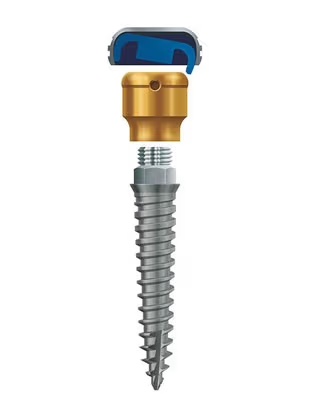 Narrow diameter implants (NDIs) have evolved from being considered a last-resort option to a predictable, evidence-supported solution in many clinical situations. As implant dentistry continues to advance, so does our understanding of when NDIs can—and should—be used.
Narrow diameter implants (NDIs) have evolved from being considered a last-resort option to a predictable, evidence-supported solution in many clinical situations. As implant dentistry continues to advance, so does our understanding of when NDIs can—and should—be used.
For the implant clinician, knowing when to select a narrow diameter implant is critical. When chosen appropriately and placed with proper protocols, NDIs can reduce the need for grafting, preserve existing bone, and restore function and esthetics with minimal morbidity. This blog explores clinical guidelines for integrating narrow diameter implants into your treatment planning with confidence.
Understanding the Indications
Narrow diameter implants are ideal in cases where space is limited either due to anatomy or prosthetic considerations. Some of the most common scenarios include:
- Reduced mesiodistal space—such as in maxillary lateral incisor or mandibular incisor sites.
- Narrow alveolar ridges—particularly in patients with horizontal bone resorption where grafting is not desirable or feasible.
- Patients with small teeth and narrow inter-root distance—such as those with naturally petite arches or in orthodontically treated cases.
- Edentulous mandibles—for implant-retained overdentures where multiple narrow implants can avoid extensive surgical procedures.
In these cases, NDIs can eliminate the need for lateral ridge augmentation, reduce treatment time, and lower the overall cost—making implant therapy more accessible to patients.
Case Selection: Who’s a Good Candidate?
Careful patient selection remains key to NDI success. Ideal candidates include:
- Patients with adequate vertical bone height but insufficient buccolingual width.
- Individuals with low occlusal load demands, such as older edentulous patients.
- Non-bruxers with favorable occlusion and no history of implant overloading.
- Patients seeking a minimally invasive alternative to grafting procedures.
Contraindications might include patients with heavy parafunctional habits, insufficient vertical bone, or those with a need for splinted restorations in high-load posterior areas where wider implants are more appropriate.
Prosthetic Guidelines
When restoring NDIs, it’s essential to minimize off-axis forces and ensure a passive fit. Restorations should be carefully designed to reduce lateral loading, especially in single-tooth posterior applications. Many manufacturers offer dedicated prosthetic components for narrow implants, including custom abutments and locator systems for overdentures. These options expand the restorative possibilities without compromising strength or esthetics.
Narrow diameter implants are not a compromise—they are a targeted solution for specific clinical conditions. When selected appropriately and used with sound surgical and prosthetic principles, they can deliver excellent outcomes while simplifying treatment for both clinician and patient. Take time to assess anatomical limitations, evaluate occlusal forces, and choose implant systems with proven biomechanical properties. NDIs may not be the answer for every case—but in the right hands, they can be a valuable tool in your implant armamentarium.



